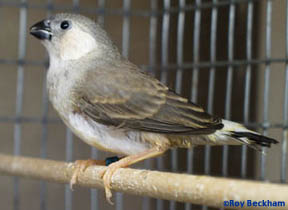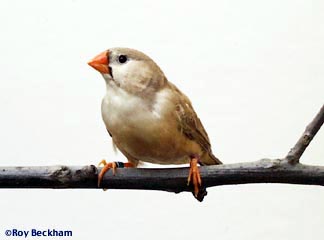Crystal wrote:Jave, in the US we have recessive silver mutations in addition to Dominant silver. So it can be [recessive] silver and the parents can be non-visual split-for-silver; recessive silver is a separate mutation from dominant silver. Black Breasted (BB) would be a pretty rare find from birds which were not purchased specifically because they were carrying the mutation. You are hard pressed to find mutations like black breasted in pet stores etc. here. Also, the black breasted gene does take away the tear drop in hens, but it does not change the body color to make it paler. Additionally, black breasted fledgelings look more like penguin zebras because of they have pale cheek patches:

2-shoes's baby does not look like this.
2-shoes's baby also does not look like the right shade to be a fawn or fawn-based mutation. The baby is more light grey than brown.
Oh yeah forgot about the recessive silver..sorry!! peace out crystal! there are recessive silvers here too but rare! yeah then you must be right! but if that is recessive it should have a tear mark! read the descriptions
Male: The Recessive Silver mutation causes all of the base gray color to dilute to a lighter, silvery color. The black markings are diluted an equal amount, but remain distinct from the base color. Overall, the mutation works to reduce the grays and blacks (eumelanin) by a "notch" or two. The orange colors of the cheek patch and flanks (phaeomelanin) remain at full strength.
Female: As in the male, the base gray color is diluted and so are the black markings of the tail and tear mark. These are diluted to the same degree as the male.
Fledgling: Recessive Silver chicks can be identified as soon as they feather out in the nest. They will have diluted feathers and look much like the hens.
BTW the bird in your picture is a BBBF and its not fawn!
here's a pic of a fawn BB

compared to 2-shoes bird

BTW Crystal LOVE your site!! learned so much from you so maybe you are right or i am right..but whoever is right it doesn't really matter..does it?








